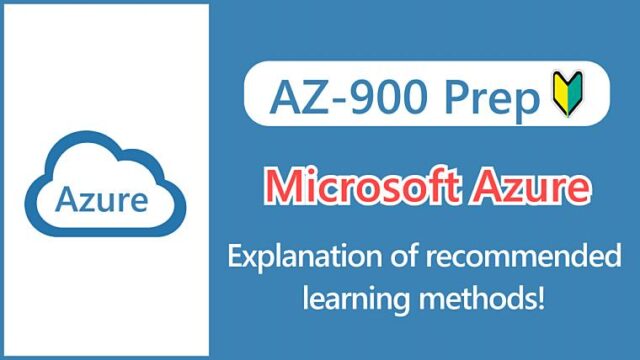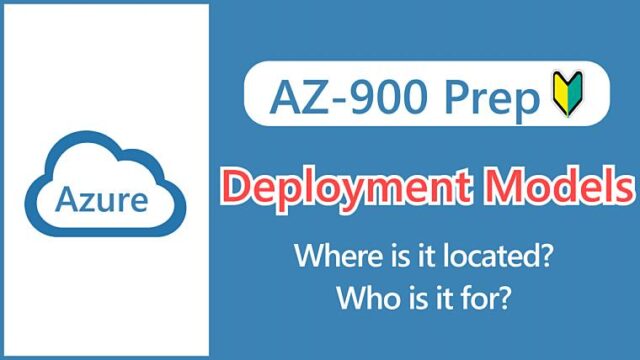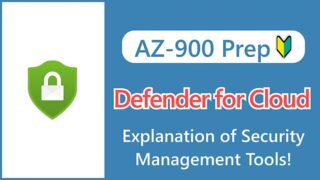【AZ-900】Understanding Azure VM Costs: A Breakdown of Cost Factors

Hi, I’m Makoto, a freelance engineer.
In this article, I’ll explain the factors that are charged when using Azure virtual machines.
Even though we’re talking about virtual machines, there are many components that make them up. Some are charged, some are not, and some can be stopped without deleting, while others cannot, which makes it surprisingly complex.
After reading this article, you’ll understand what you’re paying for with virtual machines. I’ll use diagrams to make it clear, so please read to the end.
Let’s get started!
Notes:
Prices are updated periodically. Always check the official documentation for the latest information.
Virtual Machine Costs
Let’s look at the big picture based on the content organized in the Summary of Virtual Machine Components article.
First, let’s look at the costs associated with virtual machines. We’ll discuss data transfer costs later.
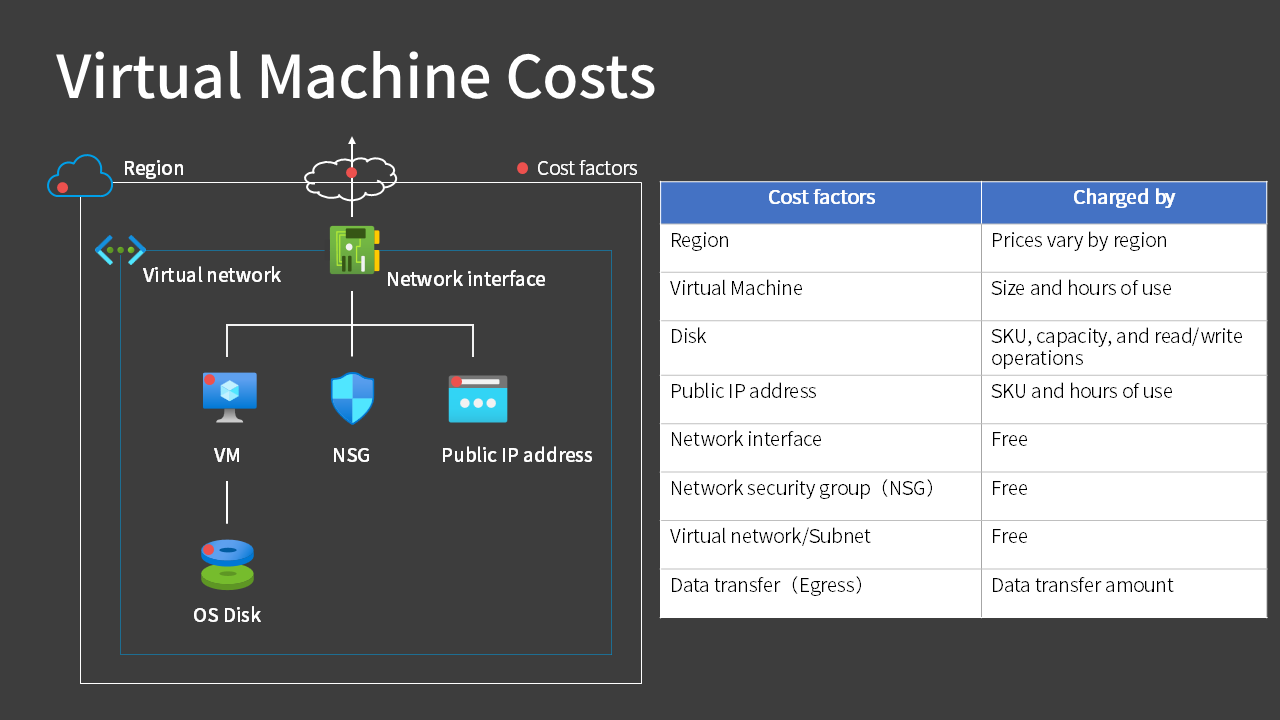
Region
Prices vary by region. In Japan, some services have the same price in the East and West regions, but some services have different prices.
A while ago, virtual machines were more expensive in the Japan East region, but now, looking at the price list, I found that for some series, the Japan West region is more expensive (although most are the same).
These prices are said to be set in consideration of the cost of living in each region, so if you can include regions other than Japan as options, it might be worth considering geographically close regions such as East Asia or Southeast Asia.
For more information on choosing regions, see this article.
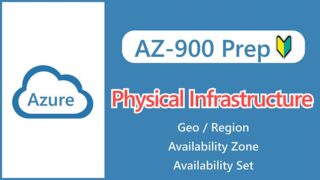
Virtual Machine
First, when you select “Size” to determine the virtual machine’s CPU and memory specifications, an hourly rate is set. In most cases, the higher the specifications, the higher the price.
You’ll then be billed based on the amount of time the virtual machine is running. Virtual machines are billed in 1-minute increments. To stop billing, you must click the Stop button in the Azure Portal and set it to Stopped (deallocated).


Key Points:
To stop billing for a virtual machine, stop it from the Azure portal and set it to the “Stopped (deallocated)” state.
However, even if you stop the virtual machine, the following disk costs are still incurred.
Disk
The disks for virtual machines are called “Managed Disks“. A price table is determined based on the “SKU” representing performance and capacity.
Reference:
SKU (Stock Keeping Unit) is a retail term that means “unit of inventory management. In the context of the cloud, it’s like a model number that represents performance.
There are three disk SKUs. There’s actually one more called “Ultra Disk,” but we’ll skip it here.
- Premium SSD
- Standard SSD
- Standard HDD
And you choose the capacity from pre-determined tiers. The hourly rate is determined by the SKU and capacity, and you’re billed based on the time the disk is allocated.


For example, you can freely enter a number to determine the capacity, such as “100GiB”, but in the case of managed disks, it’s almost meaningless.
Managed disks are billed based on provisioned (reserved) capacity, so if you create a disk at 100GiB, you’ll be billed at 128GiB. If you create it at 129GiB, you’ll be charged at 256GiB. Be careful.
Key Points:
Managed disks are billed based on the provisioned capacity.
Memo:
The size of the OS disk is determined by the image selection. For details, see the Summary of Virtual Machine Components article.
You can increase the disk capacity later, but you can’t decrease it. So start by creating only the minimum capacity you need.
And as mentioned earlier, even if you stop the virtual machine, the disk capacity remains reserved, so the charging doesn’t stop. To stop charging, you must delete the disk.
Public IP Address
There are two types of public IP address SKUs: Basic and Standard.
- Basic – Dynamic
- Basic – Static
- Standard – Static
The price difference between Basic and Standard is minimal, with differences in availability zone support, routing settings, etc.
Reference:
On September 30, 2025, Basic SKU public IPs will be retired. For exam preparation, you’ll need to keep track of both until they’re retired, but if you’re using them in the field, it’s better to go with Standard so you don’t have to upgrade in the future.
Source: Public IP addresses
When you assign a public IP address to a virtual machine, you should assume that you’ll be charged by the hour for each IP issued, whether dynamic or static.
Strictly speaking, there are detailed conditions such as not being charged if it’s “dynamic” and the virtual machine is stopped, but for the AZ-900 exam, it’s fine to assume that this is a billing element.
Am I charged for a public IP address when my virtual machine is stopped-deallocated?
In ARM deployment model, there is no charge for dynamic public IP addresses when the associated virtual machine is “stopped-deallocated”. However, you’re charged for a static public IP address irrespective of the associated resource.
When does the billing clock for Public IP addresses start and stop?
For static public IP addresses in ARM deployment model, and reserved IP addresses in ASM deployment model, the billing clock starts the second hour after you create the IP address (to allow time to assign the IP address appropriately). The clock stops when you delete the IP address resource.
Source: Public IP Addresses Pricing – FAQ (as of July 2024)
Others
There’s no charge for creating network-related resources.
- Network Interface
- Network Security Group (NSG)
- Virtual Network
- Subnet
You will be charged according to the “Data Transfer” amount explained below.
Data Transfer Costs
The basic idea behind data transfer costs is this:
- Inbound traffic to Azure is free
- Outbound traffic from Azure is charged
Let me repeat this because it’s important.
Inbound is free, outbound is charged.
Inbound/outbound can also be referred to as ingress/egress.
Here’s a diagram. I’m using Japanese regions as an example.
Blue arrows are charged, white arrows are free.


- Azure → Internet is charged, Internet → Azure is free
- Azure → On-premises is charged, On-premises → Azure is free
- Azure → Azure in another region is charged
- Communication within the same region is free
To be precise, there is a free tier of up to 5GB for outbound traffic, but you don’t need to be aware of this for the AZ-900 exam preparation.
Reference:
Although communication between availability zones within the same region was to be charged, it was finally announced in May 2024 that it will not be charged (remains free).
Source: Update on Inter-Availability Zone Data Transfer Pricing
Next, for virtual network peering, both inbound and outbound are charged, whether they’re in the same region or different regions.
For network services, see also this article.



How to Check Azure Pricing?
If you want to check the pricing for each service, try searching Google for “azure cost service name”.
In most cases, the pricing page of the official documentation will appear at the top.
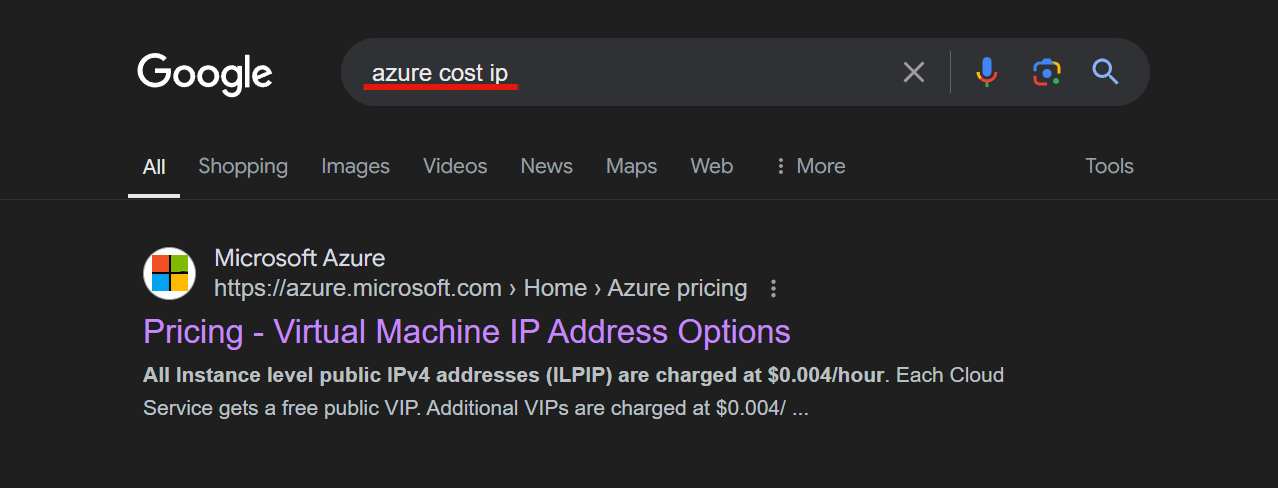

If you want to estimate prices, the pricing calculator is handy. I’ll show you how to use it in another article.


Summary
In this article, we have explained the factors that are charged when using Azure virtual machines, divided into the server configuration part and the network data transfer part.
Roughly speaking, there are four cost factors for virtual machines:
- Virtual Machine
- Disk
- Public IP Address
- Data Transfer (Egress)
To optimize costs, it’s important to know what you’re being charged for, what SKUs (pricing plans) are available, and what the billing units are.
If you’re using services other than virtual machines, we recommend that you deepen your understanding by consulting official documentation and other resources.
See you next time!


